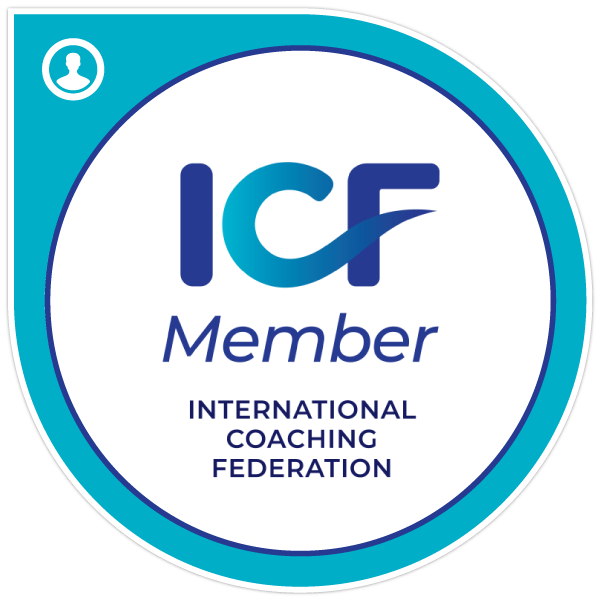Are Your Leadership Traits Inspiring Loyalty
Rich Baron • September 21, 2023
People simply want to feel heard and understood.
Leaders don’t always realize it, but the way they interact with their employees can often make or break their team’s work experience. One study showed that 57% of employees quit their jobs because of their bosses, with an additional 32% seriously considering a job change to get away from an unruly manager. The data also shows that employees are more productive when they have positive, fair relationships with their bosses — so even if that 32% can’t be bothered to put in the effort to find another job, you can bet they aren’t giving it their all during the workweek — and likely, that reality stems from an uninspiring leader who lacks the leadership traits to bring their employees along for the journey.
Though your leaders are likely paying close attention to the results you produce, your employees are paying attention to something else entirely — the way you treat them and make them feel. There are certain leadership traits that can inspire loyalty amongst your team members simply because it makes them feel as though they are trusted and valued members of the team.
The following are some examples of how various leadership traits can inspire loyalty in not only your employees, but for those other people in your lives.
Empathy
Though it may be easy to forget, nobody starts their career in a top leadership position. At one point, we were all just starting out, eager to prove ourselves and climb up the corporate ladder. Think back to when you were beginning your career, or perhaps a few years into a job you were excited about. How did you feel when you went to work? How much of that stemmed from having a good leader? Or perhaps from a leader that was not so good.
Leaders have a great deal of control over the way their employees feel from day to day. You can be the reason they excel with the company or the reason they are giving their two weeks’ notice. A great way to ensure you stay in touch with your employees is by practicing the leadership trait of empathy — put yourself in their shoes and act accordingly.
If you have a stressed-out account lead who happens to be working on the company’s three most difficult accounts, take the time to talk with them about it, see how they are feeling, and come up with an arrangement that will make their lives easier. If you’ve heard repeated grumbling from your team about an office policy that has become a hassle, hear them out, empathize with their feelings, and come up with a solution. More often than not, people simply want to feel heard and understood. Listen, empathize, and take that listening a step further by solving your employees’ problems.
Honesty
There is little that can do more damage to your reputation as a leader than dishonesty. Earning your employees’ trust is a hard-fought battle as it is — destroying that trust with a lie or by taking credit where it isn’t deserved can set you on a path with little hope for return.
Employees often ask difficult questions, and while it may be easy to brush them off or tell a white lie at the moment to save face, being honest will gain you far more respect, and you may be surprised to find that your employees have come armed with solutions for the problems they’ve brought to your attention.
Honesty as a leadership trait goes beyond answering tough questions with candor—it means admitting when you’ve made a mistake, too. Though it’s never easy to do, admitting to a mistake and demonstrating honesty and accountability will build your reputation as an honest leader and help your employees realize they can be honest with you when they’ve made mistakes of their own.
Ask yourself these tough questions, "Do my employees trust me," and, "Do I trust my employees." The default setting in most organizations is a lack of trust. However, making the decision to be vulnerable, and truly answering those questions, is a secret weapon that the senior leadership team has that can be used to heighten the trust in their organizations.
Open Communication
Your employees know more about what goes on at your organization than you may ever realize. You get to decide how they receive difficult or confusing messages: directly from you, or from water cooler conversations. Beyond the bigger conversations, effective communication can greatly impact productivity — the clearer you are about your expectations and goals for the organization or your individual team, the more likely your employees are to rise to the occasion.
Positive Mindsets
Positivity doesn’t always refer to simply smiling and looking cheerful, positivity is more about one’s overall perspective on life and their tendency to focus on all that is good in life.
A great definition of a positive mindset comes from Kendra Cherry at Very Well Mind:
"Positive thinking actually means approaching life’s challenges with a positive outlook. It does not necessarily mean avoiding or ignoring the bad things; instead, it involves making the most of the potentially bad situations, trying to see the best in other people, and viewing yourself and your abilities in a positive light.”
Having a positive mindset means making positive thinking a habit, continually searching for the best not only in ourselves but those around us. In addition, having a positive mindset is often associated with the key to our success. Great leaders truly understand this and are continually aware of their own "behavioral footprint" and understand how that impacts those around them. When we are in touch with our own behavioral footprint, we have a much better chance of making it a positive one. Our own positive mindset and behaviors can lift people up, make work more efficient, or solve problems. The greatest leaders are those who understand how much their actions, great or small, actually affect those around them.
A Willingness to Coach
Using your knowledge to help your employees learn and grow within their roles and the organization is one of the most surefire ways to inspire loyalty amongst your team members. If a great opportunity arises it isn’t particularly difficult to leave a leader that doesn’t invest any time or energy into their people, but it is much more difficult to leave someone who puts genuine effort into helping their employees learn and grow. Use the expertise you have earned throughout your career to help those you work with, whether it relates to time management, navigating organizational relationships, or working on complex clients or projects.
The Vulnerability Challenge
If you find yourself needing to improve on these traits, Executive coaching is the sturdy bridge that connects individual leadership effectiveness with outstanding organizational performance. However, it takes vulnerability. Making the decision to be vulnerable is difficult and actually, disrupting your life to make changes is even harder. So often as a coach, I hear the excuse that opening up will show my weaknesses, or I do not have the time for this. I agree, that it is not easy; however, vulnerability is a necessary component of growth.
Always remember that the decision to be vulnerable does not mean you are a weak leader. It takes a great deal of courage in choosing to be vulnerable. The vulnerability decision is the key to unlocking the potential to become a great leader. It will open doors to opportunities that were never thought possible for both yourself and your organization. Truly great leaders are fully aware of their strengths and gaps and as a result, are humble in their approach to leading.
Where Do You Want To Be
And finally, take note that nothing comes from nothing, it takes effort to accept the challenge to do better, be better, and have better outcomes. And for those who feel they do not have time, remember that time does not care if you are engaged in growing yourself or not. Time will pass you by regardless. The difference is that you must know where you personally want to be in 6 months or a year from now. You can be right where you are at now, or on a journey to personal development and leadership growth. The choice is yours.
If you want to find out how executive coaching can help you improve your leadership traits, Reach out to me here.
About the Author
Rich Baron is the Director of Culture Transformation and Training and a Master Certified Intelligent Leadership Executive Coach at John Mattone Global. With a wealth of expertise spanning over 25 years, he has excelled in various realms such as cultural transformation, operational leadership, executive positions, and coaching individuals from emerging leaders to CEOs. Rich hosts "Mainline Executive Coaching ACT," a podcast acknowledged by Feedspot in 2023 as the foremost Executive Coaching Podcast worldwide. This recognition is based on evaluating numerous podcasts on the internet, taking into account factors such as web traffic, social media followers, and timeliness. The podcast enjoys a substantial following in more than 70 countries and 600 cities across the globe.




